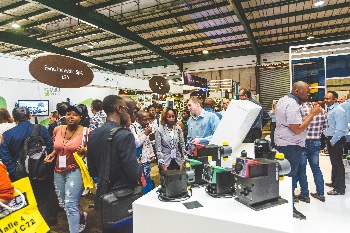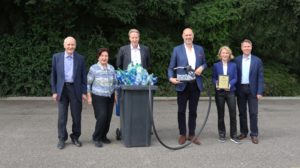IFAT Africa 2019: Tailor-made Solutions for Africa’s Waste Management
Within the coming thirty years, the population in Africa is predicted to double to around 2.5 billion people. The continent’s environmental problems thus will further increase. Adequate waste treatment and disposal are a top priority: according to a World Bank report released in September, waste generation in sub-Saharan Africa will triple by 2050.

IFAT Africa 2019
In many African countries, the disposal situation is precarious. According to a report of the United Nations Environment Programme (UNEP), African municipalities on average only collect around 55 percent of the waste. More than ninety percent of the waste generated on the continent is dumped in an uncontrolled manner and, moreover, is often burned openly. 19 of the world’s 50 largest landfills are located in sub-Saharan Africa.
Potential of eight billion US dollars from recycling
Although an informal recycling system has been established in quite some places, this system only concentrates on certain recyclables. The authors of the UNEP report estimate that seventy to eighty percent of the municipal waste in Africa could be recyclable. “Currently, the recycling rate is around four percent only”, says Prof. Linda Godfrey, Manager of the Waste RDI Roadmap Implementation Unit from Pretoria, South Africa and coordinating lead author of the UNEP report. “If, however, uncontrolled dumping is replaced by the diversion of waste into reuse, recycling and recovery, this could unlock at least eight billion US dollars in resource value into the African economy every year.”
Move toward growth and modernization in sub-Saharan Africa
The World Bank has observed that the waste management in the 48 nations of the sub-Saharan region experiences a perceptible growth and modernization surge, which currently focuses on the construction of modern landfills, on the expansion toward an institutionalized, comprehensive waste collection and on environmental education measures for the population.
Added to this are flagship projects in recycling. One example: in March last year, Namibia’s first refuse-derived fuel (RFD) plant was put into operation. The plant of nearly 16 million US dollars in Windhoek shall convert an annual 12,000 tons of non-recyclable waste material into alternative fuel for a cement plant.
Considering the special needs of the continent
The costs to improve waste management in the sub-Saharan region remain a central challenge. According to UNEP, the governments are increasingly looking for innovative finance solutions. The budgetary reform in Senegal, for example, among other things seeks to generate resources for waste services. The analysts think that also public-private partnerships could help to solve Africa’s waste problems. Linda Godfrey: “The required systems and technologies must be appropriate for the continent. Addressing the waste management challenges facing the continent will require a combination of small-scale, low-cost, decentralized, community-driven initiatives and larger-scale, higher-cost, centralized initiatives.”
From July 9 to 11, 2019, the international environment industry will meet in South Africa at IFAT Africa organized by Messe München. In addition to water and sewage technologies, the exhibition at the Gallagher Convention Centre will focus on waste management and recycling for sub-Saharan Africa. “I think there are few comparable opportunities to get an authentic idea of this market of such global importance which is as interesting as demanding,” comments Katharina Schlegel, Exhibition Director IFAT Trade Fairs Abroad at Messe München.
Source: Messe München GmbH


